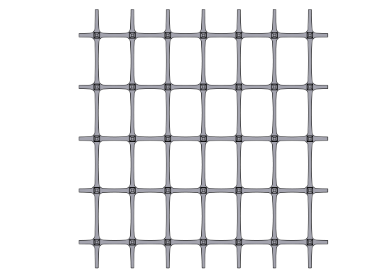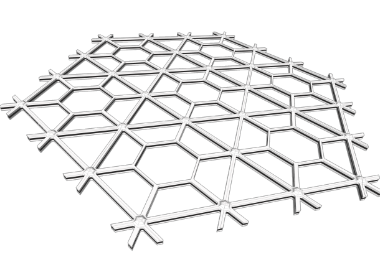
Structural pavement design to support the heaviest of loads
Heavy-duty roads and surfaces commonly found in high-stress applications require special attention to the structural design and construction of pavement. They are constantly subject to extremely heavy wheel loads and must be designed to support large loads from truck traffic, cranes, and other cargo transfer equipment. These pavements serve a variety of critical markets, including intermodal, port and loading facilities, airport runways, warehouse/distribution centers, and heavy truck corridors.
The frequent heavy loads imposed on pavements of intermodal and warehouse/distribution centers already wreak havoc on maintenance budgets. But now, diminishing and costly aggregate supplies, tightening construction budgets, and heavier wheel loads have forced engineers, contractors and owners to explore lower cost alternatives to traditional methods of construction. In addition, engineers and contractors are increasingly asked to balance the unique design requirements associated with heavy-duty pavement roads and surfaces with environmental concerns.
Modern heavy-duty pavement designers and contractors use Tensar geogrids to balance all these factors with ease. We extensively test our geogrids to ensure long-term performance and value. Tensar provides long-term resiliency for haul roads and surfaces so they can stand up to both extreme usage and severe environmental conditions.
Improved Design Life & Bearing Capacity
Heavy-duty pavements often deal with slow moving or even static traffic loads with ultra-high load magnitude. They also often surround facilities with large parking/paved areas, high traffic zones, laydown areas, equipment yards, construction site entrances, storage lots, and other heavy-use areas.
By integrating Tensar geogrids into a pavement's structural design, it is possible to extend the design life of heavy-duty roads by a factor of three to six times, leading to significant lifecycle cost savings. The load-spreading capability of Tensar geogrids can also be used to increase bearing capacity as well, so you can trust that your road will hold up to the loads it needs to support.
Because heavy-duty pavements are often the backbones of long-term construction projects, any situation causing them to become temporarily inaccessible or unusable can result in costly project delays. It's vital for the project schedule that high traffic roads remain operational even amidst the most challenging events. The smart way to achieve resilience for these surfaces is to use geogrids like proven Tensar TriAx® geogrid and next-generation InterAx™ geogrid to stabilize and stiffen the subsurface beneath them.
Access/Haul Road Design & Maintenance
An estimated one-half of all roads in the United States, and an even higher percentage of roads throughout the world, are unpaved. Many of them serve as heavy-duty access and haul roads for critical industries, including mining operations, highway construction, power generation and water treatment plants, wind farms, oil drilling, refining and storage sites. A failed road can be disastrous.
Weak subgrades pose the greatest challenge to the performance of an unpaved access or haul road. Left untreated, a weak subgrade subjected to continuous heavy traffic will quickly deform, causing the road surface to rut, pothole, “washboard,” and ultimately deteriorate beyond use.
Incorporating Tensar geogrids in unpaved access and haul road design and construction results in a more cost-effective use of materials that saves time and money; dramatic maintenance savings can be realized.
The Power of Geogrids
For stabilizing aggregate, especially over weak subgrades, stiffer is better. Tensar’s technology and expertise in ground stabilization not only improve site performance, but are proven to reduce costs and environmental impact. Our innovative geogrid solutions provide effective confinement of granular fill, resulting in a stiff mechanically stabilized layer (MSL) capable of controlling differential settlement and increasing bearing capacity.
Tensar geogrids create a "snowshoe" effect over soft subgrades by locking aggregate particles more efficiently during compaction, stiffening the granular platform, reducing subgrade stress, and ensuring a more uniform surface even under the harshest conditions.
With Tensar geogrids, you need less aggregate to stabilize your job site – and less aggregate means less cost. They’re fast and easy to install, which means less time lost from your project schedule. The resulting resiliency of your heavy-duty roads and surfaces reduces maintenance budgets and extends the life of infrastructure. And Tensar geogrids are backed by thousands of hours of testing and research, so you can trust the results.









.png)